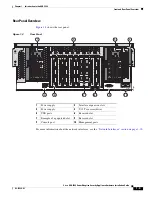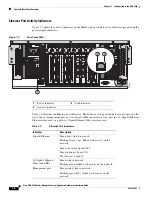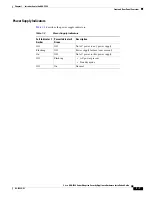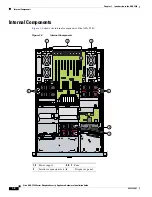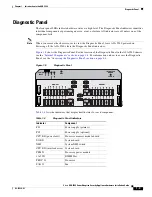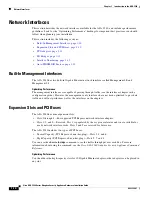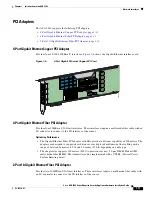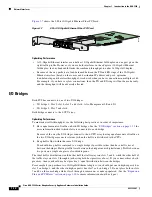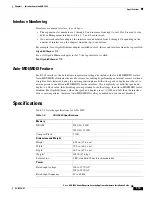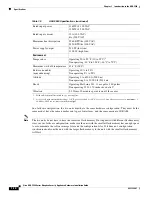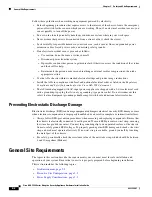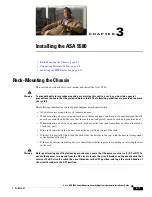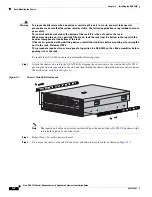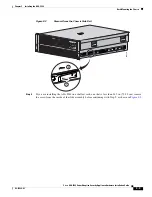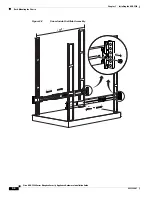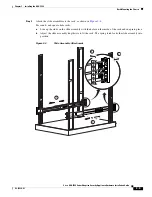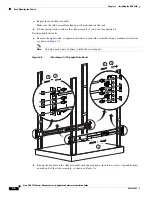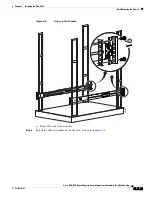
1-10
Cisco ASA 5580 Series Adaptive Security Appliance Hardware Installation Guide
OL-12920-01
Chapter 1 Introduction to the ASA 5580
Network Interfaces
Network Interfaces
This section describes the network interfaces available for the ASA 5580, and includes performance
guidelines. Look for the “Optimizing Performance” headings for important best practices you should
follow when planning your installation.
This section includes the following sections:
•
Built-In Management Interfaces, page 1-10
•
Expansion Slots and PCI Buses, page 1-10
•
PCI Adapters, page 1-11
•
I/O Bridges, page 1-12
•
Interface Numbering, page 1-13
•
Auto-MDI/MDIX Feature, page 1-13
Built-In Management Interfaces
The ASA 5580 has two built-in Gigabit Ethernet network interfaces called Management 0/0 and
Management 0/1.
Optimizing Performance
The management interfaces are capable of passing through traffic (see the interfaces chapter in the
configuration guide). However, the management-only interfaces have not been optimized to pass data
traffic and will not perform as well as the interfaces on the adapters.
Expansion Slots and PCI Buses
The ASA 5580 has nine expansion slots:
•
Slots 3 through 8—For supported PCI Express network interface adapters.
•
Slots 1, 2, and 9—Reserved. Slot 1 is populated by the crypto accelerator and is not available for
use by network interface cards. Slots 2 and 9 are reserved for future use.
The ASA 5580 includes two types of PCI buses:
•
Normal Capacity (PCI Express x4 non-hot-plug)—Slots 3, 4, and 6.
•
High Capacity (PCI Express x8 non-hot-plug)—Slots 5, 7, and 8.
You can use the
show io-bridge
command to see the traffic throughput over each bus. For more
information about using the command, see the
Cisco ASA 5580 Adaptive Security Appliance Command
Reference
.
Optimizing Performance
You should use the high-capacity slots for 10-Gigabit Ethernet adapters; other adapters can be placed in
any slot.










